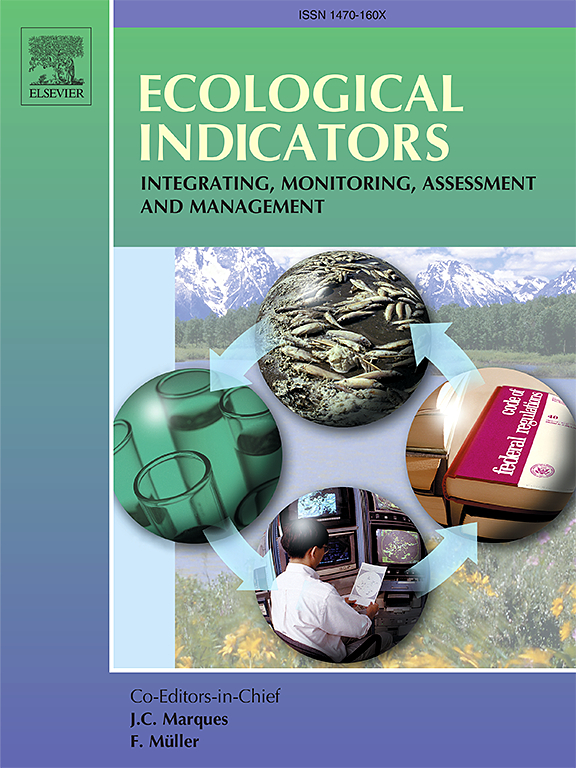多中心城市空间结构能否减少污染聚集?
IF 7
2区 环境科学与生态学
Q1 ENVIRONMENTAL SCIENCES
引用次数: 0
摘要
为应对环境治理与经济社会进步之间的矛盾,中国政府启动了多中心城市空间框架设计项目。然而,多中心对环境的影响作用仍存在争议,对其影响机制的相关研究也较少。因此,本文的研究样本包括 2006 年至 2021 年中国的 272 个地级市。采用地序尺度法计算城市多中心和地理集中度,以确定污染聚集程度。随后,利用双向固定效应和中介效应模型研究了多中心对污染集聚的影响及其机制。研究结果表明,在整个研究期间,中国的污染集聚水平从 "东高西低 "转变为 "东低西高"。城市空间结构以多中心为主,且多中心趋于强化。基准回归结果表明,多中心发展有利于降低污染浓度。异质性表明,在特大城市、经济发展水平高的城市和非资源型城市,多中心对降低污染更有效。根据中介效应的考察,提高生产性服务业的集聚度和减少资本要素市场的扭曲是多中心改善环境的重要路径。这些结论为理解城市空间结构与污染集聚之间的关系提供了经验证据,为政府制定城市空间发展规划提供了理论依据。本文章由计算机程序翻译,如有差异,请以英文原文为准。
Can polycentric urban spatial structures reduce pollution aggregation?
In response to the conflict between environmental management and economic and social progress, the Chinese government has launched a project to design a spatial framework for polycentric cities. However, the role of polycentric in influencing the environment remains controversial, and fewer studies are related to the mechanisms of their influence. Thus, the study sample for this paper consisted of 272 prefecture-level cities in China from 2006 to 2021. Urban polycentric and geographic concentration were calculated using the place-order scale approach to determine pollution agglomeration. Subsequently, polycentric influence on pollution agglomeration and the mechanisms that underpin it are investigated using two-way fixed-effects and mediated-effects models. The findings indicate that China’s pollution agglomeration levels shifted from “high in the east and low in the west” to “low in the east and high in the west” throughout the study period. Cities’ spatial structure is predominantly polycentric, and the polycentric tends to strengthen. The benchmark regression findings demonstrate that polycentric development is conducive to reducing pollution concentration. Heterogeneity shows that polycentric is more effective in reducing pollution in super-sized cities, cities with high economic development, and non-resource cities. According to the examination of mediation effects, increasing the agglomeration of productive services and reducing the distortion in capital factor markets are important paths for polycentric to improve their environment. These conclusions provide empirical evidence for understanding the relationship between urban spatial structure and pollution agglomeration, offering a theoretical basis for government to formulate urban spatial development plans.
求助全文
通过发布文献求助,成功后即可免费获取论文全文。
去求助
来源期刊

Ecological Indicators
环境科学-环境科学
CiteScore
11.80
自引率
8.70%
发文量
1163
审稿时长
78 days
期刊介绍:
The ultimate aim of Ecological Indicators is to integrate the monitoring and assessment of ecological and environmental indicators with management practices. The journal provides a forum for the discussion of the applied scientific development and review of traditional indicator approaches as well as for theoretical, modelling and quantitative applications such as index development. Research into the following areas will be published.
• All aspects of ecological and environmental indicators and indices.
• New indicators, and new approaches and methods for indicator development, testing and use.
• Development and modelling of indices, e.g. application of indicator suites across multiple scales and resources.
• Analysis and research of resource, system- and scale-specific indicators.
• Methods for integration of social and other valuation metrics for the production of scientifically rigorous and politically-relevant assessments using indicator-based monitoring and assessment programs.
• How research indicators can be transformed into direct application for management purposes.
• Broader assessment objectives and methods, e.g. biodiversity, biological integrity, and sustainability, through the use of indicators.
• Resource-specific indicators such as landscape, agroecosystems, forests, wetlands, etc.
 求助内容:
求助内容: 应助结果提醒方式:
应助结果提醒方式:


